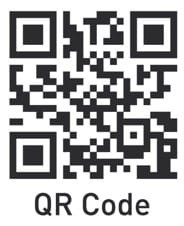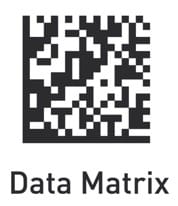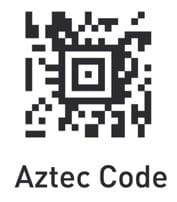Blog
The 1D Barcode Sunrise: The Shift to 2D Barcodes is Reshaping Packaging
GS1 barcodes have been the industry standard for product identification, inventory management, and retail operations for decades. However, these linear codes are reaching their limits as businesses demand greater traceability, richer product data, and seamless consumer interactions.
Now, a significant transformation is underway. The 1D Barcode Sunrise is the planned global transition from traditional 1D barcodes to advanced 2D barcodes, a shift that is not just a future possibility, but a present reality. This transition is set to revolutionize packaging, logistics, and consumer engagement, and businesses need to act now to stay ahead.
With a 2027 deadline set by GS1, companies across industries are preparing to integrate 2D barcode technology into their operations. Pack-Smart Inc. is helping businesses navigate this transition with cutting-edge automation, high-speed labelling, and serialization solutions designed for full compliance and operational efficiency.
What is the GS1 Barcode Sunrise?
The 1D Barcode Sunrise is an initiative led by GS1, the global standards organization for barcode technology, pushing industries to adopt 2D barcodes such as GS1 Digital Link QR Codes and Data Matrix codes instead of traditional UPC and EAN barcodes. Watch the video below –
By 2027, retailers, manufacturers, and distributors worldwide will be expected to support 2D barcodes at checkout, enabling a more connected and efficient ecosystem for supply chains and consumer engagement.
This transition is driven by the need for greater transparency, more detailed product information, and a standardized approach to tracking and authentication.
Get in touch with us today to learn how precision-driven labelling, high-speed barcode serialization, and advanced traceability solutions can prepare your business for the transition to 2D barcode technology with confidence.
Discuss 1D Sunrise with Pack-Smart Inc.What Are 2D Barcodes?
Unlike traditional 1D barcodes, which store limited information in a linear format, 2D barcodes encode significantly more data within a compact, two-dimensional pattern. This allows for greater flexibility, enhanced security, and improved scanning efficiency across industries.
Common Types of 2D Barcodes

QR Codes (Quick Response Codes) – One of the most widely recognized 2D barcode formats, QR codes store URLs, product details, marketing content, and authentication data. The codes can be scanned using smartphones, making them ideal for consumer engagement, e-commerce, and track-and-trace applications.

Data Matrix Codes – Known for their small size and high-density storage, these barcodes are widely used in pharmaceuticals, electronics, and medical devices to encode serial numbers, expiration dates, and traceability data.

CrontoSign – A cutting-edge authentication technology, CrontoSign generates encrypted, color QR codes for highly secure transactions and identity verification. Commonly used in banking and financial services, it ensures fraud-resistant authentication by encoding sensitive data within a dynamic, scannable image.

Aztec Codes – Used in transportation and ticketing, Aztec codes store large amounts of data in a compact format, often found on boarding passes, train tickets, and event access passes.

Micro QR Code – A compact version of the standard QR code, Micro QR is designed for applications where space is limited. Despite its smaller size, it retains high data capacity and is widely used in electronics, healthcare, and product packaging for serial numbers, authentication, and tracking.
With 2D barcodes becoming the new standard, businesses across industries are upgrading their labelling, serialization, and scanning technology to stay ahead in the next era of digital packaging and supply chain visibility.
What Are 3D Barcodes?
While 2D barcodes are currently leading the way in packaging and supply chain visibility, the emergence of 3D barcodes marks a significant leap in product identification and traceability. Unlike their 1D and 2D counterparts, 3D barcodes stand out for their incorporation of depth and texture, enabling them to be physically embedded or engraved into materials like metal, plastic, and glass.

3D barcodes, unlike ink-based printed barcodes, are often laser-etched, embossed, or created using additive manufacturing processes. This versatility makes them particularly valuable in industries where durability and permanence are paramount, such as aerospace, medical devices, automotive manufacturing, and industrial equipment.
How Are 3D Barcodes Applied?
Unlike traditional printed barcodes, 3D barcodes are created using advanced laser marking, micro-percussion engraving, or moulded directly into products during manufacturing. This ensures they are:
- Resistant to wear, heat, and environmental damage
- Readable under extreme conditions, including low visibility
- Compatible with specialized scanners that detect depth and structure
The Role of 3D Barcodes in Smart Packaging
As industries continue to advance toward smart packaging and digital track-and-trace solutions, 3D barcodes provide an extra layer of security and permanence. Their ability to withstand harsh conditions while maintaining data integrity makes them ideal for applications where long-term traceability and counterfeit prevention are essential.
While 2D barcodes are transforming retail, logistics, and consumer engagement, 3D barcodes are positioning themselves as a crucial solution for industrial-grade tracking and authentication. Together, these technologies are shaping the future of data-rich, highly secure product identification.
Why Are 2D Barcodes Replacing 1D Barcodes?
While 1D barcodes have been effective for essential product identification, they come with limitations. They store limited information, require a precise scan, and lack dynamic functionality.
2D barcodes, on the other hand, offer:
- More data capacity – Store product details, expiration dates, serial numbers, batch codes, and URLs in a single compact code.
- Faster scanning – Readable from any angle, even if scratched, torn, or dirty.
- Universal compatibility – Works with smartphones, POS systems, and industrial scanners, making them ideal for consumer interaction and logistics tracking.
- Real-time updates – Embedded links can connect consumers to dynamic digital content, promotions, and authentication tools.
This next-generation barcode technology provides the efficiency, accuracy, and transparency needed to meet modern business challenges. The benefits of 2D barcodes, from increased data capacity to faster scanning and real-time updates, make them a valuable asset for businesses across industries.
The Benefits of 2D Barcodes Across Industries
The transition to 2D barcodes will affect nearly every industry that relies on barcode technology. Businesses that integrate 2D barcode solutions early will gain significant advantages in supply chain efficiency, regulatory compliance, and consumer engagement. The time to act is now to secure these benefits and stay ahead of the curve.
Manufacturers & Packaging Suppliers
- Seamlessly integrate 2D barcodes into product packaging and labels to meet compliance deadlines.
- Future-proof operations with high-speed serialization and smart labelling solutions for global retail requirements.
Retailers & E-Commerce Platforms
- Improve checkout speed and accuracy with instant scanning from any angle.
- Enhance customer engagement by linking 2D barcodes to promotional content, authenticity verification, and sustainability details.
Pharmaceuticals & Healthcare
- Strengthen anti-counterfeiting measures with track-and-trace serialization for compliance with global regulations.
- Provide real-time product verification to ensure patient safety and authenticity.
Food & Beverage Companies
- Improve traceability and recall management with detailed batch and expiration tracking.
- Offer consumer transparency by embedding allergen information, sustainability data, and freshness indicators.
The shift to 2D barcoding isn’t just about compliance—it’s an opportunity to create smarter, more connected packaging that benefits both businesses and consumers.
How Pack-Smart Inc. Supports the Transition to 2D Barcodes
With high-speed labelling and printing for 2D barcodes, Pack-Smart Inc. is helping businesses to seamlessly adopt 2D barcode technology with high-speed automation and track-and-trace solutions designed for accuracy, efficiency, and full compliance.
High-Speed Labelling & Printing for 2D Barcodes
HSL-60 High-Speed Labeller: Applies NFC-enabled labels, RFID tags, and serialized 2D barcodes with unmatched precision, ensuring seamless traceability and product authentication. Learn more about our High-Speed Labeller
SJ Series Inkjet Printers: High-resolution, on-demand variable data printing for QR codes, Data Matrix codes, and GS1 Digital Link barcodes, ensuring fast, flexible, and compliant label production. Learn more about our SJ Series Printers
Delta-X Track & Trace Software: Provides real-time supply chain visibility, allowing brands to monitor, authenticate, and engage with products throughout their lifecycle. Learn more about our Delta-X Software
With our modular automation and serialization technology, businesses can integrate 2D barcoding solutions without disrupting production processes.
Preparing for the 1D Barcode Sunrise. Are You Ready?
The 1D Barcode Sunrise is one of the most significant industry-wide packaging and product identification shifts. With the 2027 Sunrise deadline approaching, businesses must act now to ensure compliance, efficiency, and seamless consumer experiences.
Companies that prepare now will benefit from the following:
- Enhanced operational efficiency with faster, smarter barcode scanning.
- Improved regulatory compliance with GS1 standards and global retail requirements.
- Greater supply chain transparency and end-to-end product tracking.
- Stronger consumer trust through smart packaging and authentication tools.
As a key player in the transition to 2D barcodes, Pack-Smart Inc. is committed to helping businesses integrate, optimize, and scale their barcode solutions for the next generation of digital packaging.
Get in touch with us today to learn how precision-driven labelling, high-speed barcode serialization, and advanced traceability solutions can prepare your business for the transition to 2D barcode technology with confidence.
Discuss 1D Sunrise with Pack-Smart Inc.
